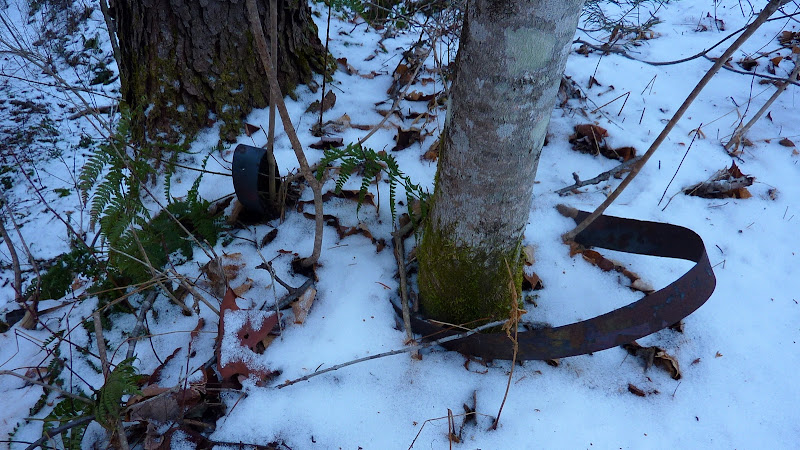1HappyHiker
Well-known member
A few days ago, I did some purposeful poking around on the west bank of the Zealand River on a segment located a few tenths of a mile south of the Ammonoosuc River. This was the northern end of the corridor for the old Zealand Valley Railroad.
A few artifacts were spotted, as seen in the snapshots below. I think the object(s) shown in the first photo is possibly barrel hoops that have become unfastened, and thus no longer form a circular hoop. Would this seem like a reasonable guess?

Regarding the object shown in the next photo, I have no idea as to what it might be. Any thoughts by anyone? In retrospect, I should've put something like my trekking poke next to it so as to provide some point of reference as to size. Regardless, I would guesstimate that the upright portion that is showing is maybe about 6 inches in height. Perhaps the diameter is about 8 inches or so. This object was spotted in an area where charcoal kilns were known to exit. And so this possibly might have had something to do with a kiln?

Also spotted in my travels in this area were sections of railway track. No photos are necessary since we all know what that looks like! However, if anyone is interested in seeing the rail track, there are a couple photos posted at my BLOG.
A few artifacts were spotted, as seen in the snapshots below. I think the object(s) shown in the first photo is possibly barrel hoops that have become unfastened, and thus no longer form a circular hoop. Would this seem like a reasonable guess?

Regarding the object shown in the next photo, I have no idea as to what it might be. Any thoughts by anyone? In retrospect, I should've put something like my trekking poke next to it so as to provide some point of reference as to size. Regardless, I would guesstimate that the upright portion that is showing is maybe about 6 inches in height. Perhaps the diameter is about 8 inches or so. This object was spotted in an area where charcoal kilns were known to exit. And so this possibly might have had something to do with a kiln?

Also spotted in my travels in this area were sections of railway track. No photos are necessary since we all know what that looks like! However, if anyone is interested in seeing the rail track, there are a couple photos posted at my BLOG.
Last edited:


